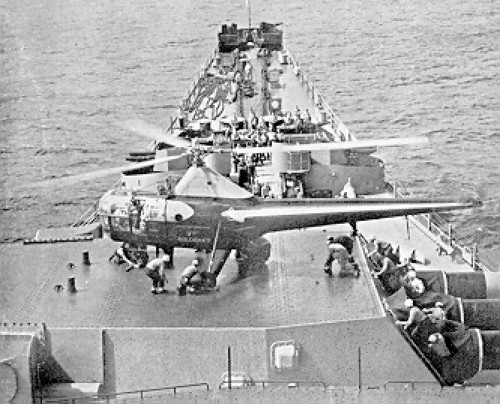

FIRST HELICOPTER NAVAL RESCUE
|
February 9, 1947 Lieutenant Shields reporting aboard, sir. I wish to report an accident...."What d'ya mean you're Lieutenant Shields?" snapped the flight control officer without even bothering to look up. "Shields just had an accident. His plane was forced down. He's in the water right now." Casually, be glanced up-and then did a "double take". For, wonder of wonders, the bedraggled young flier standing there was Lieutenant Robert A. Shields. But how had he done it? Scarcely six or seven minutes before Shields had radioed he was ditching his SB2C because of engine failure. He'd ditched it, too, by the looks of his soaked flying suit. But, here he was, big as life, back aboard his carrier, the Leyte, when by all odds he should have been bobbing about in a life raft waiting to be picked up by a tin can and returned to the carrier later in the day, or maybe the next day. The flight control officer shook his head. "Hell," he muttered, "this man's navy is getting too fast for me." The answer to Shields' speedy return was a Sikorsky S-51 helicopter flown by D. D. (Jimmy) Viner, chief test pilot for Sikorsky Aircraft. Viner, based with Task Fleet 2 to demonstrate the capabilities of the rotary-winged aircraft, had just picked up Shields and the latter's crewman, Aviation Radioman Don K. Little. The date was February 9 and it was the first of four rescues made by the helicopter during the fleet's recently completed maneuvers in the Atlantic and Caribbean. Operating from the big carrier, Franklin D. Roosevelt, the helicopter, in the eyes of hundreds of officers and seamen, proved beyond doubt its usefulness to the fleet not only for rescue work but for many other duties which it performed more speedily and efficiently than they had ever been done before. |
 |
| ŠAvStop Online Magazine Contact Us Return To News |